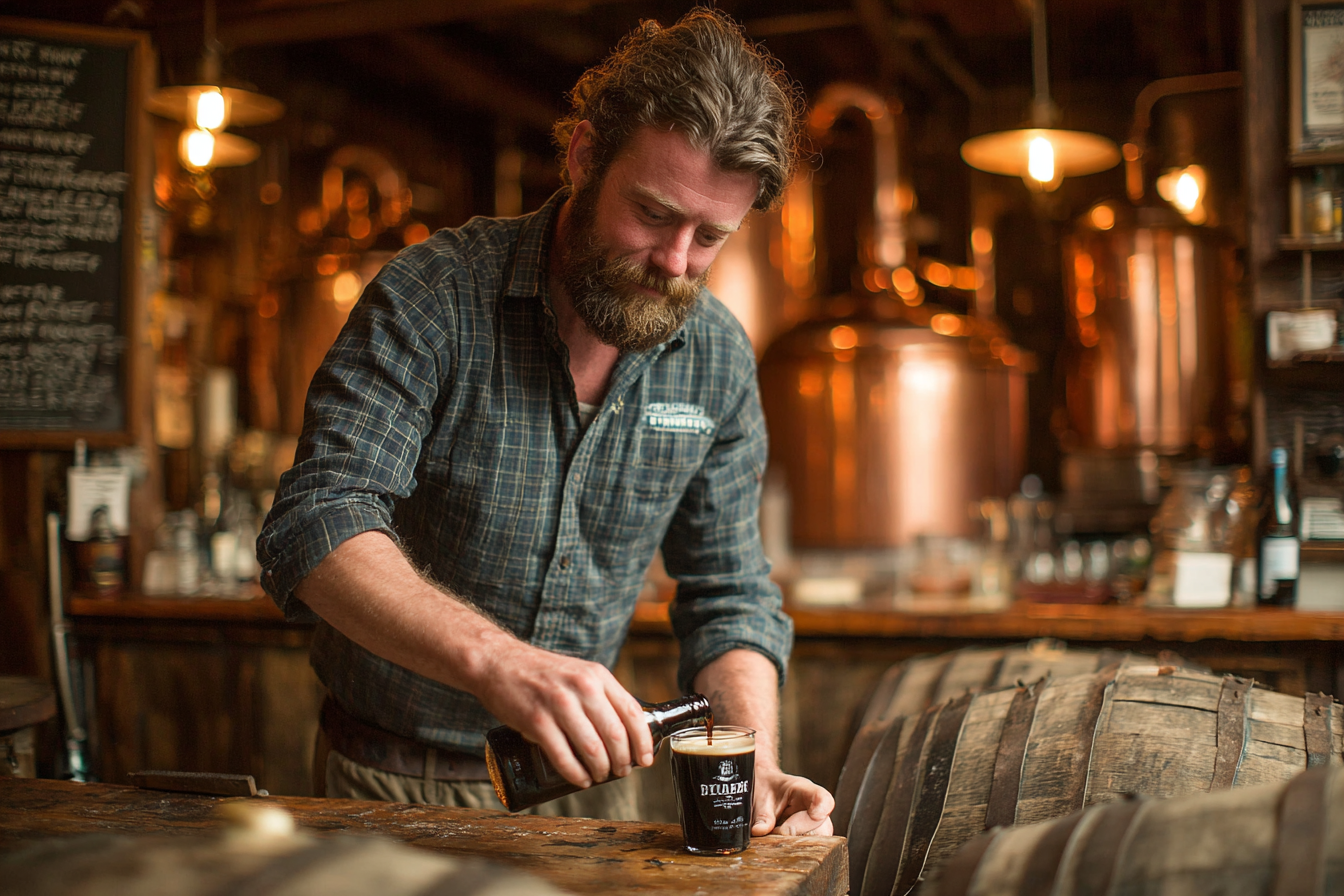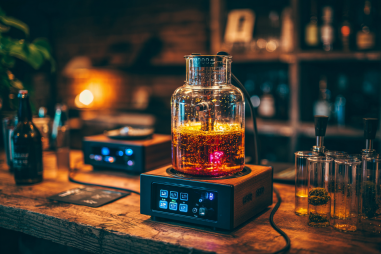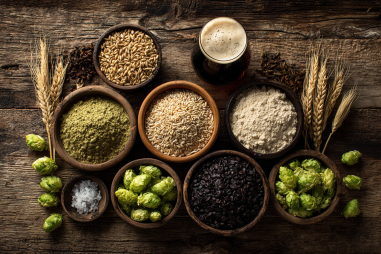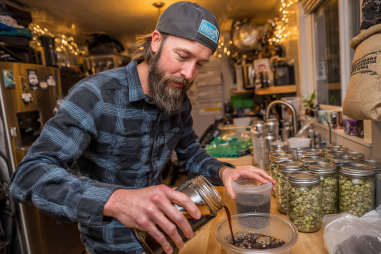Wood-aged stouts represent a pinnacle of brewing craftsmanship that merges traditional brewing techniques with the art of barrel aging. This process infuses the stout with complex flavors derived from the interaction between the beer and wood, creating a rich, layered taste profile that beer enthusiasts deeply appreciate. If you’re curious about how brewers transform a basic stout into a wood-aged marvel, this guide dives into every step of the wood-aged stout brewing process.
Introduction to Wood-Aged Stout Brewing
Wood-aging stouts is a centuries-old practice that adds depth, character, and complexity to the beer. The process involves maturing stout in wooden barrels or with wood chips, allowing the beer to absorb aromatic compounds from the wood and any previous contents of the barrel, such as whiskey, bourbon, or wine. This slow transformation requires skill and patience, as each batch reacts uniquely depending on several critical factors during aging.
What starts as a robust, dark, and malty stout gradually evolves into a multi-dimensional brew with hints of vanilla, caramel, oak, smoke, and sometimes even gentle notes of the spirit that once filled the barrel. Wood-aged stouts often become limited-edition releases cherished by aficionados, making the craftsmanship behind them especially prized.
Selecting the Base Stout Recipe
Every successful wood-aged stout begins with a solid foundation—a well-crafted base stout recipe. The choice of the base beer significantly impacts how well the stout will interact with the wood during aging. Typically, brewers opt for robust stouts such as imperial stouts or Russian imperial stouts because their bold malt profile can stand up to the intense influence of wood aging.
Key elements for the base stout include:
- Strong malt backbone: A rich, malty strength with roasted flavors ensures the stout holds its character and balances the wood’s tannins and flavors.
- Higher alcohol content: Generally, base stouts brewed for wood-aging have an alcohol content between 8% and 12% ABV or higher, aiding preservation and enriching flavor extraction from the wood.
- Balanced bitterness: Moderate to low hop bitterness lets the wood and malt shine without overshadowing complexities that develop during aging.
Brewers may also consider slight recipe tweaks, such as adding lactose for sweetness or experimenting with different roasted malts to create layers that the wood can enhance.
Choosing the Right Wood Barrels or Chips
The choice of wood is a vital decision that shapes the stout’s final flavor profile. Whiskey barrels are among the most popular options, as they impart notes of oak, vanilla, and residual whiskey flavors. Bourbon, rye, rum, and wine barrels each contribute unique characteristics, adding a personalized touch to the aging process.
There are two main approaches to wood-aging stouts:
- Whole barrels: Aging stout in an entire wooden barrel—preferably oak—is the traditional and preferred method. The porous wood allows slow oxygen transfer, promoting complex chemical reactions and maturation over time.
- Wood chips or spirals: For smaller-scale or experimental batches, brewers may use toasted or charred wood chips, spirals, or cubes. These can give some of the wood-derived flavors more quickly but typically lack the full complexity of barrel-aging.
Other considerations when selecting barrels include the wood’s toast or char level, previous barrel contents, and barrel size. New American oak barrels tend to give more intense oak and vanilla notes, while used French oak barrels might impart subtler and more nuanced flavors.
The Aging Process: Duration and Conditions
Wood-aging is a slow, deliberate process. When stout is placed into barrels or mixed with wood chips, it undergoes chemical changes where flavors meld, soften, and enhance. The aging duration can vary considerably depending on the wood, base beer, and desired flavor profile.
Typically, stouts aged in barrels mature for anywhere from 3 months to over 2 years. Most brewers find a sweet spot around a 6 to 12-month aging period to produce balanced complexity without over-aging, which can lead to undesirable flavors.
Optimal conditions for wood-aging include:
- Consistent temperature: Aging rooms usually maintain temperatures around 55–65°F (13–18°C) to regulate the metabolic activity of yeast and flavor development.
- Humidity control: Proper humidity ensures barrels do not dry out and maintains ideal evaporation rates.
- Minimal light exposure: Aging in dark or dimly lit spaces protects the beer from light oxidation.
Barrels should be stored horizontally to keep the wood hydrated and maintain barrel integrity. Regular monitoring is essential to ensure proper maturation.
Monitoring and Tasting During Aging
Patience is key, but proactive monitoring during the wood-aging process allows brewers to control the development of flavors and intervene if needed. Throughout the aging period, brewers routinely sample the beer to assess how the oak and any residual spirits are influencing the stout.
Important aspects to evaluate include:
- Balance of flavors: Checking how the woody notes integrate with malt, roast, and any residual sweetness.
- Off-flavors or spoilage: Detecting any unwanted flavors such as excessive oxidation, vinegar-like aromas, or bacterial infections.
- Alcohol warmth: Assessing whether the alcohol presence is well-rounded or overpowering.
Based on tastings, brewers may choose to blend wood-aged stout batches, adjust aging times, or blend with fresh stout to soften rough edges. This iterative process ensures the final product meets quality standards and flavor expectations.
Challenges and Tips for Successful Wood-Aging
Wood-aging stouts is not without its hurdles. Some common challenges include:
- Risk of contamination: Barrels can harbor wild yeast or bacteria that spoil the beer if not properly sanitized.
- Over-oaking: Aging too long or using overly aggressive wood can overpower the stout’s natural flavors.
- Evaporation loss: Known as “angel’s share,” significant volume may be lost over many months of aging.
To overcome these issues, consider the following tips:
- Carefully clean and sanitize barrels before filling to minimize unwanted microbes.
- Start with shorter aging times on new wood or harsh barrels and gradually extend in future batches as you learn their characteristics.
- Maintain stable temperature and humidity to protect barrel integrity and beer quality.
- Document every batch’s parameters—aging time, wood type, temperature— to refine your process over time.
- Engage in small pilot batches when experimenting with new wood sources or recipes to reduce risk.
Final Packaging and Serving Tips
After the wood-aged stout reaches the desired flavor profile, it’s time for packaging. Brewers commonly choose bottles or kegs for final packaging. Bottling often allows the wood-aged stout to further condition and develop subtle carbonation with natural yeast.
Key steps before packaging include:
- Filtering or fining (if desired) to clarify the stout while retaining flavor.
- Blending if necessary, to balance batches or smooth out flavor inconsistencies.
- Priming with sugar or yeast if bottle conditioning is planned.
When serving wood-aged stouts, the following tips enhance the tasting experience:
- Serve at slightly warmer temperatures (around 50-55°F/10-13°C) to release complex aromas.
- Use wide-mouthed glassware, like a snifter or tulip glass, to concentrate the rich bouquet.
- Pair with robust foods such as grilled meats, chocolate desserts, or aged cheeses to complement the stout’s depth.
Mastering the Artistry of Wood-Aged Stout Craftsmanship
The wood-aged stout brewing process is a true labor of love that marries brewing skill with patient artistry. From carefully selecting a base stout to choosing the ideal wood, managing precise aging conditions, and meticulous monitoring, every step shapes the character of the final brew. The result is a complex, nuanced beer that tells a unique story of transformation and time.
This timeless craft invites brewers to innovate within tradition, experiment boldly, and savor the magic that emerges when stout meets wood. Whether you’re a homebrewer considering your first barrel-aged batch or a beer enthusiast eager to understand your favorite wood-aged stouts better, appreciating the craftsmanship behind this process adds another layer of enjoyment to every sip.







